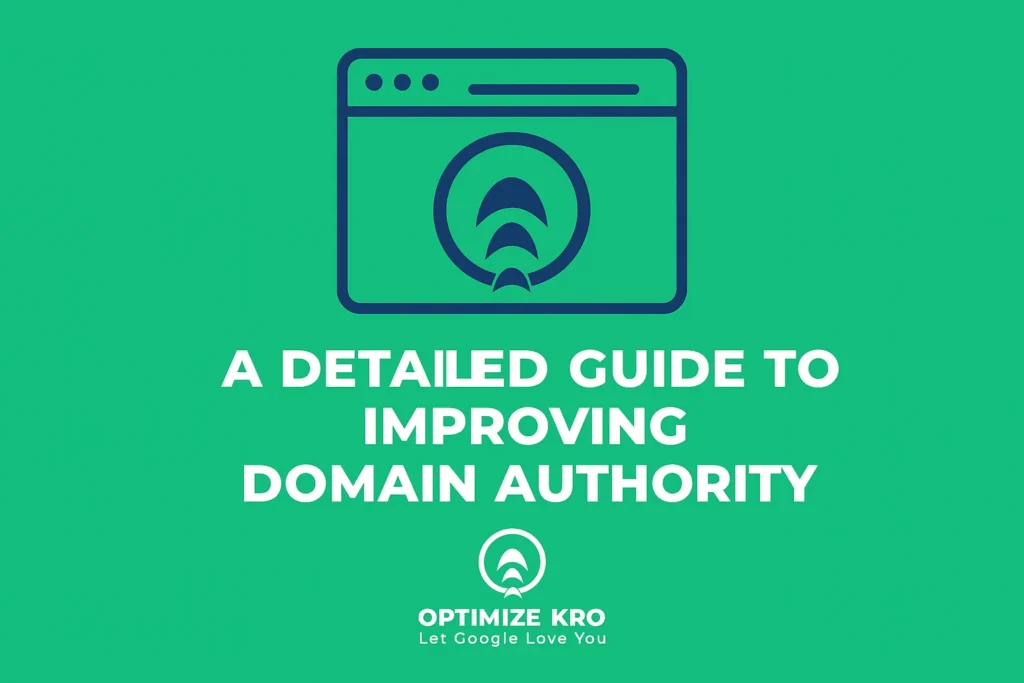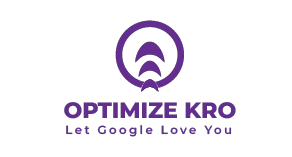Domain Authority (DA) is a key metric used by search engines to assess the overall authority and trustworthiness of a website. It is a score ranging from 1 to 100, with higher scores reflecting a higher likelihood of ranking well in search engine results pages (SERPs). Improving your Domain Authority is essential for gaining better organic search rankings, increasing traffic, and boosting your website’s credibility.
In this guide, we will walk through actionable strategies, best practices, and common FAQs to help you improve your domain authority.

1. Understanding Domain Authority (DA)
What is Domain Authority?
Domain Authority is a score developed by Moz that predicts how well a website will rank on search engines. DA is calculated by evaluating various factors, including backlinks, content quality, and more. Websites with a high DA are considered more authoritative and trustworthy by search engines.
How is DA Calculated?
DA is calculated using a logarithmic scale, where higher scores are exponentially harder to achieve. The algorithm considers:
- Link Profile: The number, quality, and relevance of backlinks pointing to your site.
- Quality Content: Websites with informative, well-structured, and engaging content tend to rank higher.
- Technical SEO: Factors like page speed, mobile-friendliness, and security (HTTPS) influence DA.
- User Behavior: How users interact with your site, including bounce rate and session duration.
Why is DA Important?
A higher DA generally correlates with higher rankings in search engine results, leading to more organic traffic. Improving DA enhances visibility, user trust, and overall site performance.
Read More:
How to Create Backlinks with Infographics
Guide to Local Citations and Local Listing
A Detailed Guide on Social Signals for Off-Page SEO
A Detailed Guide on Digital PR for Link Building
2. Key Factors Affecting Domain Authority
Quality of Backlinks
Backlinks are one of the most important ranking factors for Domain Authority. They signal to search engines that other sites trust your content. However, not all backlinks are equal. High-quality backlinks come from authoritative, relevant websites within your industry.
Best Practices:
- Seek backlinks from sites with high DA.
- Focus on earning backlinks through valuable content, outreach, and guest posts.
On-Page SEO
On-page SEO refers to optimizing individual pages of your site to improve their search engine rankings. This includes optimizing title tags, meta descriptions, header tags, keyword usage, and internal linking.
Best Practices:
- Use descriptive and keyword-optimized titles and meta descriptions.
- Organize content with proper header tags (H1, H2, etc.).
- Use internal linking to guide users and improve SEO.
Technical SEO
Technical SEO ensures that your website is easily crawlable and indexable by search engines. Factors such as page load speed, mobile optimization, and site security play a significant role in improving your DA.
Best Practices:
- Ensure your website is mobile-friendly.
- Use HTTPS for better security.
- Improve page speed by optimizing images and using caching.
Content Quality
High-quality content is crucial for ranking and building domain authority. Content that is informative, engaging, and relevant to your audience is more likely to earn backlinks and social shares, boosting your DA.
Best Practices:
- Create well-researched, original content that addresses your audience’s pain points.
- Use multimedia elements (images, videos, infographics) to enhance content.
User Experience (UX)
Google values websites that provide a positive user experience. This includes fast load times, easy navigation, and mobile responsiveness.
Best Practices:
- Improve site navigation for easier access to information.
- Ensure your website loads quickly on both desktop and mobile devices.
Social Signals
Although social signals (likes, shares, and comments on social media) are not direct ranking factors for DA, they can indirectly impact it by driving traffic and generating backlinks.
Best Practices:
- Promote content on social media channels.
- Engage with followers to increase brand awareness.
3. Actionable Steps to Improve Domain Authority
Build High-Quality Backlinks
Here is the ways of off-Page SEO:
- Guest Posting: Write quality guest posts on authoritative sites within your niche.
- Content Outreach: Reach out to influencers or bloggers for backlinks to your valuable content.
- Broken Link Building: Identify broken links on authoritative websites and offer your content as a replacement.
Optimize On-Page SEO
- Title Tags and Meta Descriptions: Optimize your title tags and meta descriptions with primary keywords.
- Header Tags: Organize content using header tags for better readability and SEO.
- Internal Linking: Link to other relevant pages within your site to improve user experience and SEO.
Improve Technical SEO
- Optimize Site Speed: Use tools like Google PageSpeed Insights to improve load times.
- Fix Broken Links: Regularly check for and fix any broken links on your site.
- Mobile Optimization: Ensure your website is fully responsive on mobile devices.
Focus on High-Quality Content Creation
- Create Pillar Content: Develop comprehensive and authoritative content around core topics in your industry.
- Update Old Content: Regularly update old blog posts to keep them relevant.
- Use Multimedia: Incorporate images, videos, and infographics to make content more engaging.
Enhance User Experience
- Improve Navigation: Simplify website navigation to improve usability.
- Mobile-Friendliness: Ensure your website is fully responsive on all devices.
- UX Testing: Conduct regular UX tests to identify and fix issues.
4. Common Mistakes That Hurt Domain Authority
Buying Low-Quality Backlinks
Buying backlinks from low-quality sites can result in penalties from search engines. Instead, focus on earning backlinks through organic means like content marketing and outreach.
Ignoring Mobile Optimization
More than half of internet users access websites via mobile devices. A website that isn’t optimized for mobile can negatively impact your DA and rankings.
Poor Content Strategy
Thin, low-quality content is detrimental to your DA. Focus on producing in-depth, valuable content that aligns with user intent.
Failing to Fix Broken Links
Broken links on your site can hurt both user experience and SEO. Regularly audit your site for broken links and fix them promptly.
What Our Clients Say
Trusted by contractors and local businesses for proven Local SEO Services.
John M. – General Contractor
“These guys transformed my Google Maps ranking. More calls, more local leads, and better visibility!”
Sarah L. – Roofing Business
“Within 3 months, my business went from page 3 to the top 3 listings. Highly recommend their Local SEO service!”
David K. – Plumbing Services
“Affordable and effective SEO. My local service calls doubled in less than 90 days.”
5. Monitoring and Measuring Your Progress
Tools to Check Domain Authority
- Moz’s Link Explorer: Provides detailed insights into your website’s backlinks and DA.
- Ahrefs: Offers robust backlink analysis and domain metrics.
- SEMrush: Includes DA tracking in its comprehensive SEO tools.
Tracking Changes Over Time
Track your DA regularly to monitor improvements and setbacks. It’s important to note that DA can fluctuate, and it’s a long-term process.
Improving Domain Authority is a long-term process that can take several months. Consistently applying SEO best practices and building high-quality backlinks will gradually increase your DA over time.
While backlinks are a major factor in improving DA, you can still see some improvement through other strategies like optimizing on-page SEO, improving technical SEO, and publishing high-quality content.
A DA score above 40 is considered good, while a score above 50 is excellent. However, what’s considered “good” can vary based on the niche or industry. For highly competitive industries, a DA score of 60 or higher may be necessary to rank on the first page.
Conclusion
Improving Domain Authority is essential for long-term SEO success. By focusing on high-quality backlinks, on-page SEO, technical optimization, and user experience, you can steadily increase your DA and improve your website’s search engine rankings. Regularly track your progress and adjust your strategies to stay ahead of the competition.

Gulfam Qamar is a seasoned Local SEO expert with a proven track record of helping businesses boost their online visibility and dominate local search results. With deep expertise in Google Business Profiles, on-page optimization, and local citation strategies, Gulfam helps brands connect with nearby customers and grow sustainably. When he’s not optimizing websites, he’s sharing actionable SEO tips and insights to empower small businesses in the digital space.

